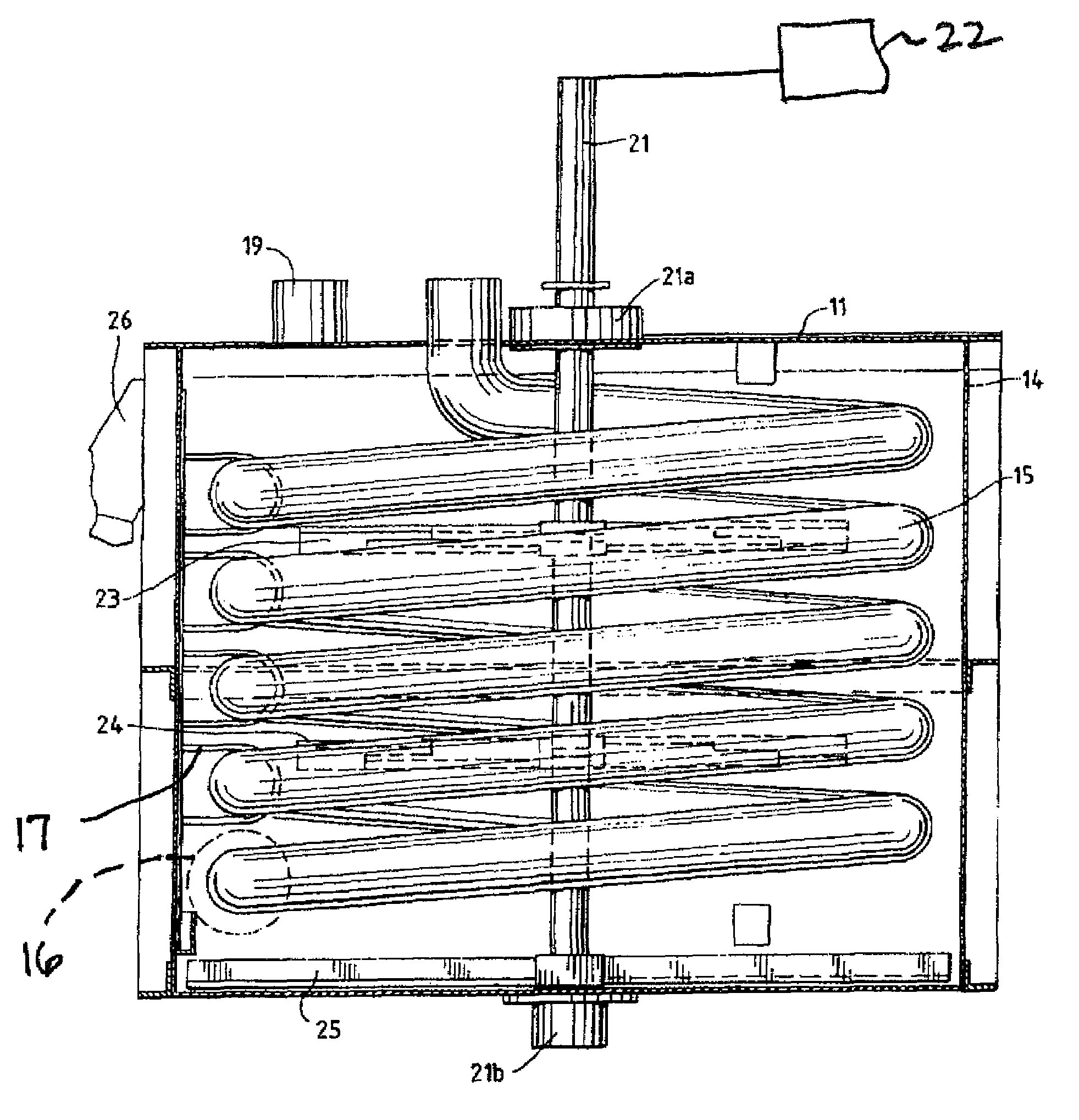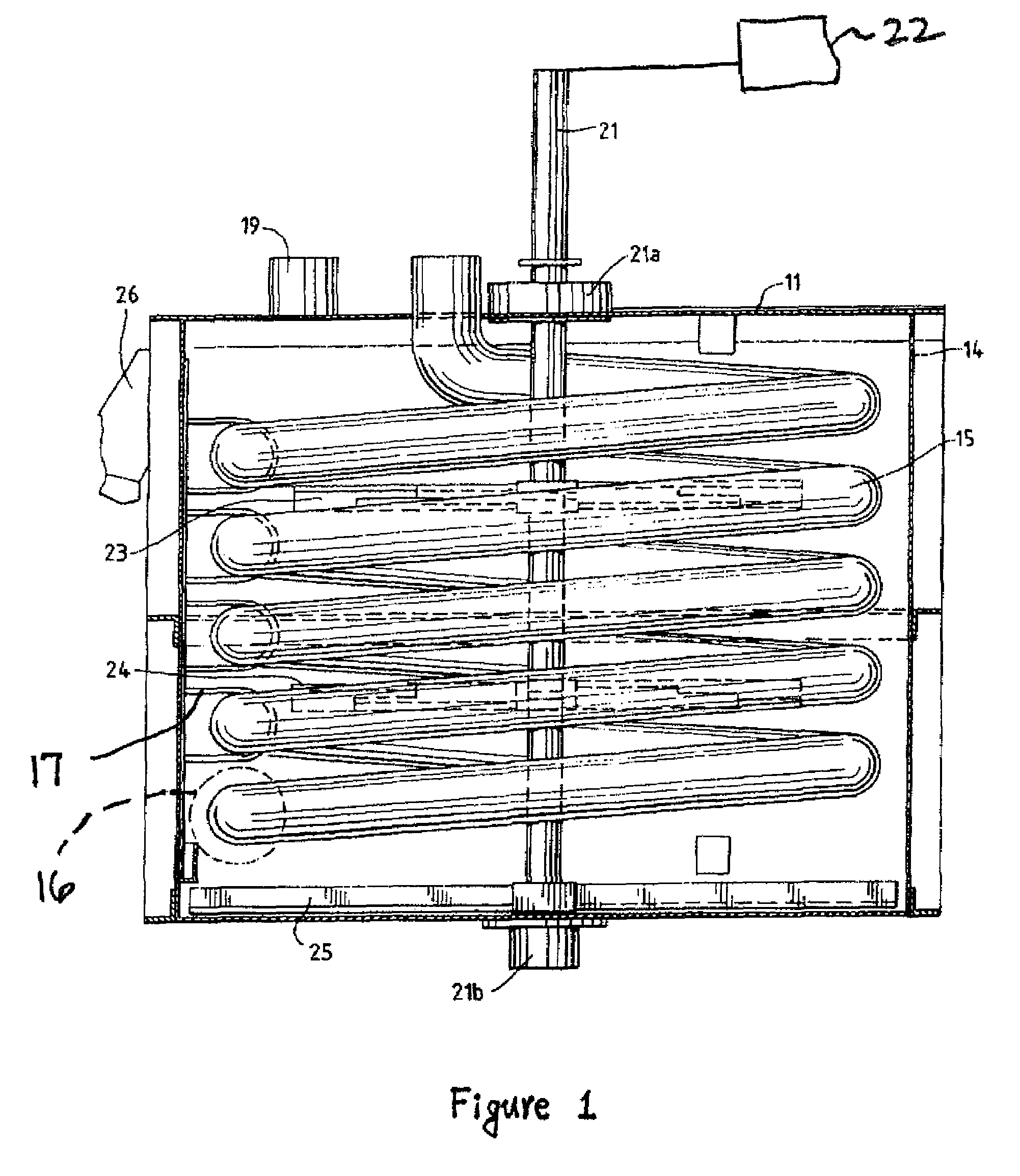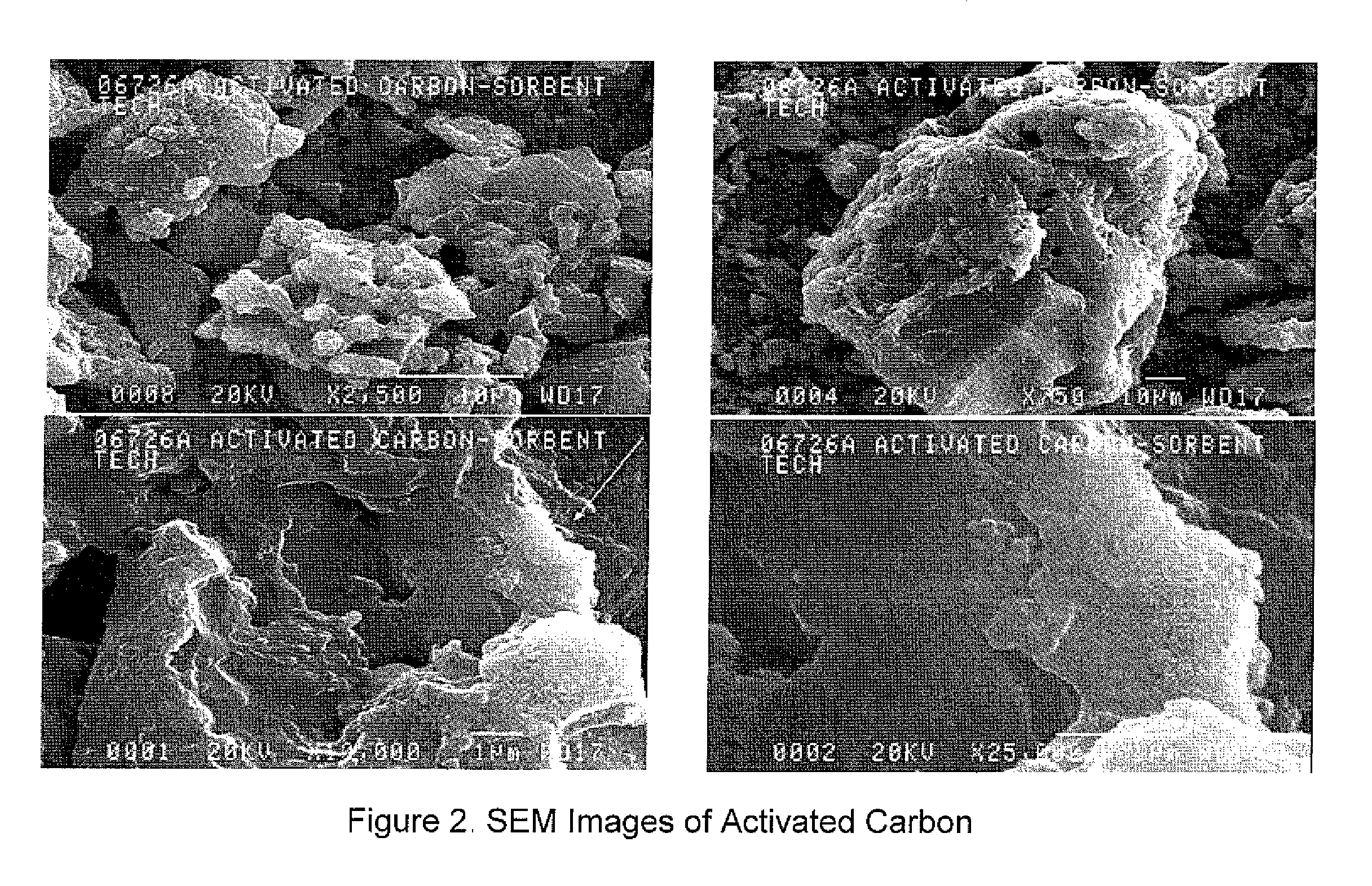Activated carbon as mercury release control agent in gypsum calcination
a technology of activated carbon and mercury, which is applied in the direction of dispersed particle separation, chemistry apparatus and processes, and separation processes, etc. it can solve the problems of reducing the efficiency affecting human health and the environment, and requiring the use of large quantities of activated carbon, so as to reduce the cost-efficiency of the disclosed method, improve the combustibility and/or explosiveness of the sorbent/gypsum mixture, and improve the effect of mercury emission control
- Summary
- Abstract
- Description
- Claims
- Application Information
AI Technical Summary
Benefits of technology
Problems solved by technology
Method used
Image
Examples
Embodiment Construction
[0034]In general, this disclosure is directed toward a method for providing effective mercury release control during calcination of gypsum in a reactor, wherein the method comprises providing a mercury sorbent in the reactor, and calcining the gypsum to form stucco. The stucco will contain the mercury and the mercury sorbent. Preferably, the mercury content of the stucco is in close approximation to the mercury content of the gypsum, while one or more application characteristics of the stucco remain substantially unaffected by the presence of the sorbent and mercury as compared to those of conventional stucco. In a preferred embodiment, the one or more application characteristics are selected from the group consisting of cube strength, rehydration time, rehydration temperature, foam generation characteristics, foam degeneration characteristics, and combinations thereof.
[0035]In a preferred embodiment, the disclosed method comprises providing a low concentration of the mercury sorben...
PUM
| Property | Measurement | Unit |
|---|---|---|
| temperature | aaaaa | aaaaa |
| temperature | aaaaa | aaaaa |
| temperature | aaaaa | aaaaa |
Abstract
Description
Claims
Application Information
 Login to View More
Login to View More - R&D
- Intellectual Property
- Life Sciences
- Materials
- Tech Scout
- Unparalleled Data Quality
- Higher Quality Content
- 60% Fewer Hallucinations
Browse by: Latest US Patents, China's latest patents, Technical Efficacy Thesaurus, Application Domain, Technology Topic, Popular Technical Reports.
© 2025 PatSnap. All rights reserved.Legal|Privacy policy|Modern Slavery Act Transparency Statement|Sitemap|About US| Contact US: help@patsnap.com



